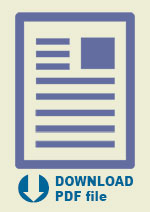Geotechnical Engineering Journal of the SEAGS & AGSSEA ISSN 0046-5828
Vol. 54 No. 4 December 2023
Mitigation of Adverse Effects of Sulfates in Cement Treated Marine Clay Subgrades
Merin Kuriakose, Benny Mathews Abraham, and Anitha G. Pillai
ABSTRACT: Marine clays are normally characterized by high compressibility and low shear strength, which contribute to many geotechnical problems and, at times, necessitate the need to adopt stabilization with calcium-based stabilizers. However, calcium-based stabilization, when adopted on clays rich with sulfates, causes sulfate heaving, which impacts the strength of the soil. As a result of this heaving, severe damage has occurred to transportation infrastructure such as highways, runways, tunnels, canals, etc. Numerous pavement failures attributed to sulfate-induced heave in cement-treated sulfate-bearing clay subgrades have been documented by researchers worldwide. In this study, an attempt was made to prevent the sulfate attack in cement-treated clay by introducing barium hydroxide and sulphate resisting cement. Unconfined compressive strength, CBR, liquid limit and free swell index tests were conducted on treated clay samples to determine the effect of sulfates in cement-treated sulfate-bearing clays for prolonged curing periods. On the basis of the results obtained, the incorporation of barium hydroxide produced a high CBR value of 70% and a strength gain of 551 kPa in treated clay samples, indicating the effectiveness of barium hydroxide in mitigating the adverse effects of high sulfate content in soil. It was also determined that the sulphate-resistant cement was sufficient to lessen the impact of 0.5% sulfate content in soil, but it was unable to mitigate the impacts of 4% sulfate, resulting in a significant reduction in strength of 34%.
KEYWORDS: Sulfate, Expansive soils, Marine clay, OPC, SRC, and Barium Hydroxide.





































